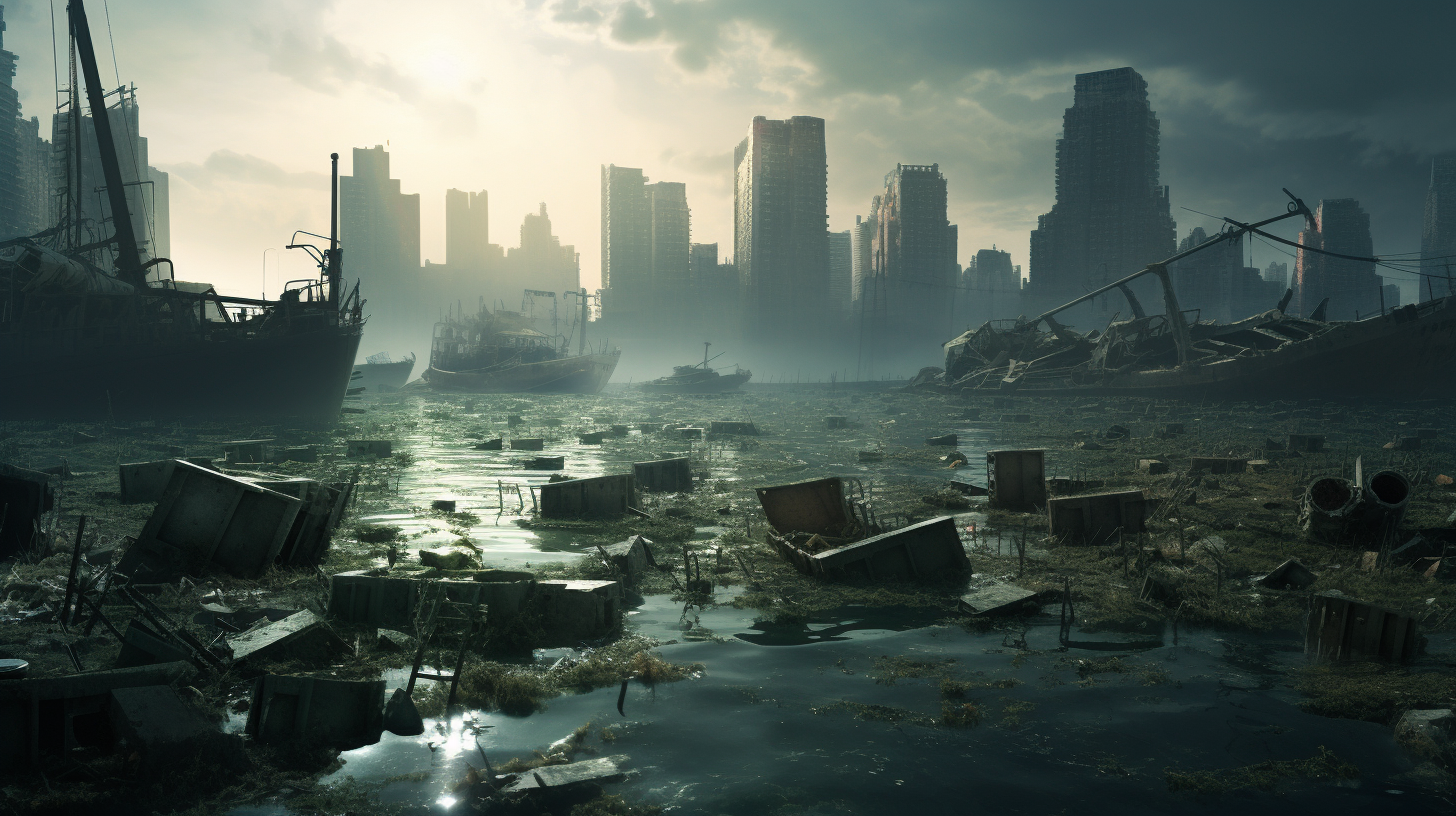The embodification of apocalypse seldom grasps our throats as tightly as when we witness the silhouettes of our once-majestic cities, now submerged beneath the wrathful waves of a climate-stricken sea. What was once the realm of postcards and skylines is now the subject of eerie dive expeditions. Our latest report, ‘Sunken Skylines: The New Atlantis Quest’, delves into this watery grave that has claimed metropolises, and with them, a significant chapter of human accomplishment.
The surreptitious rise of the seas that we witnessed for decades has, in our negligence, burgeoned into an unstoppable force, rendering iconic coastlines unrecognizable. Whole blocks of what was once New York, Tokyo, and Mumbai have been choked by the ocean’s might, leaving us to question the cost of progress measured against the currency of nature’s fury.
Our journey begins in the remnants of Lower Manhattan, now a canvas of ”Neptune’s urbanism’ where the Statue of Liberty’s torch barely glimmers above the waves. Here, despair lingers like fog as the realization sinks in; liberty, much like the land it once rose from, is ephemeral in the face of a changing planet.
Entire economies, once buoyant with industry and innovation, sit laden at the bed of new-found seas. Historians once marveled at the lost city of Atlantis, pondering its myths. Now, modern civilizations have their own submerged wonders with tales and warnings etched into their saltwater-laden architectures.
Adventurers and the morbidly curious, those dubbed as ‘New Atlanteans’, have taken to these drowned cities, weaving between rooftops that now serve as perches for aquatic life. A poignant irony is not lost on us that these modern archeologists swim through the very boardrooms where decisions that hastened this watery end were made.
As if in macabre solidarity with our previous insights in ‘The Vanishing Act of Rivers’, cities beneath the waves are further testament to our folly. Yet, here lies an insidious beauty in the interplay of fish where once pedestrians shuffled; an anemone’s tendrils curling around a stoplight captures the essence of an unintended rewilding process in the heart of what once pulsed with anthropogenic energy.
From this aquatic vantage, ‘Hydroraiders’ from our former story echo just beneath the surface, suggesting that humanity’s craving for nature’s rapidly depleting reserves knows no bounds – terrestrial or otherwise. Indeed, new legends form of treasures lost within the abyss, of safes and vaults sealed within these urban reefs, a black market blooming even here in the realm of Poseidon.
We have been extravagant in our indifference, blind to the burgeoning limits of human endurance and the environment alike. The ‘water-from-air’ technologies, once the exclusive arsenal against drought for the elite, now seem trivial before the boundless oceanic sprawl that suffocates cities and drowns our collective history.
The narrative, steeped in despondency, may compel one to muse on the inevitability of the deluge; however, it strikes a chord of morose fascination as well – a paradox as undeniable as our own reflection in still waters. And here, in the midst of Neptune’s gain, vestiges of culture are reborn. As we saw art crafted from the wreckage in the desiccated rivers, the submerged world, too, fosters a canvas, stirring a powerful concoction of remorse and strange magnetism.
And though we cast a look upon these drowned dreams with a semblance of awe, we must also confront the harrowing reminder that they bestow upon us. They stand, not simply as relics for our amusement or horror, but as symbols of misguided human endeavor and the deafening silence of neglected warnings.
Cities descending into Neptune’s embrace serve as dire harbingers, as if in morbid rivalry with the parched riverbeds that once pleaded for our swift action. A poignant kinship in destruction connects these disparate landscapes of despair, illustrating with unbearable clarity the finality of our choices and the depth of our losses.
In an age now defined by its Green Dystopia, these monuments of the deep ask us not for remembrance, but for reflection – a pulsing call to acknowledge the destructiveness of our blindness and the far-reaching ripples of our every act.
The world above continues to gasp for breath as it wades through ecological demise, while below, in the briny deep, the remnants of our world whisper a haunting lament. Yet, we continue our meandering ways, overlooking the cries of both earth and ocean.
In chasing the story of these Sunken Skylines, we encounter the silent echoes of a forgotten world, begging us to listen before the tides rise yet again, and more of our present becomes the past’s sunken memories.
